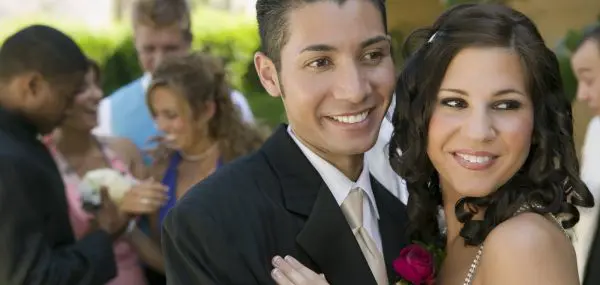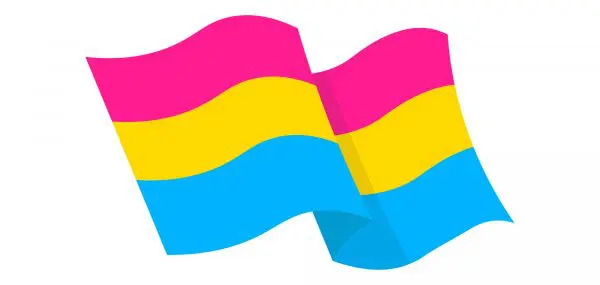An important part of teaching teenagers about sex includes providing accurate information about sexually transmitted infections. What are STIs? How are they transmitted? And how can they be prevented? Here’s what parents need to know.

The 411 on Sexually Transmitted Infections:
1. You don’t have to have sex to get an STI.
A prevalent misconception among teenagers is that STIs are only spread through sexual intercourse. In fact, most STIs are spread via exposure to fluids such as semen, vaginal fluids and blood and, as a result, can be contracted through (vaginal) sexual intercourse, but also via anal sex and oral sex. Some STIs, like herpes or genital warts, can be transmitted through just skin-to-skin contact with an infected area.
“Any time you are having skin to skin contact, including finger to vaginal or finger to penile or oral sex you can transmit an infection,” explains Dr. Lisa Lowery, an adolescent medicine specialist with the Helen Devos Children’s Hospital in Grand Rapids, Michigan.
2. The most common STIs in teenagers are chlamydia and gonorrhea.
Chlamydia and gonorrhea are both bacterial STIs that are transmitted through vaginal, anal, and oral sex. They can be contracted by both males and females. Both infections are curable when treated with antibiotics. Patients with chlamydia and gonorrhea are often asymptomatic, explains Lowery. “When symptoms do occur, it’s burning with urination, vaginal or penile discharge, and/or vaginal irritation. Those are the most common early symptoms.”
Other common STIs and their symptoms include:
Trichomoniasis — Caused by a parasite and spread via genital contact. Symptoms include discharge, itching, burning or sore genitals.
Genital herpes — One of the most common STIs and spread through sexual intercourse, as well anal sex and oral sex. Symptoms include painful, burning or itching skin in genital area; burning during urination; blister-like sores in genital area.
Syphilis — Early stage syphilis looks like a sore, followed by a rash. Later stages of the infection are often asymptomatic, until it reappears causing serious health issues, even death. Transmitted via vaginal, anal and oral sex.
HPV — Another extremely common STI. In fact, it’s estimated up to 50 percent of people who’ve had sex have had HPV. Symptoms depend on the type of HPV. HPV is often asymptomatic, but some forms cause genital warts, while others can lead to cancers or the cervix, penis, and anus. There is now a vaccine to prevent the cancer-causing strains of HPV.
HIV — The STI that left untreated can progress to AIDs. Early signs of HIV infection are similar to the flu.
3. Some STIs can be cured with antibiotics.
These include chlamydia, gonorrhea, trichomoniasis, and syphilis.
4. There are also STIs that can’t be cured.
These include genital herpes and HIV, says Lowery. Both can be treated, but there is no known cure (yet) for these SDIs.
5. Not treating STIs can lead to serious health problems.
HIV leads to AIDS and syphilis, left untreated, also leads to severe health issues, even death. But not treating more common STIs, like chlamydia and gonorrhea, can also cause significant health problems. For women, this includes pelvic inflammatory disease (PID), which is an infection of the reproductive system. “The infection can travel from the vagina to the cervix and into the uterus,” explains Lowery. PID can cause damage to the reproductive system and is a leading cause of infertility in women. Men can also become infertile from untreated STIs as a result of an infection of the male reproductive system.
6. Sexually active teenagers should be tested for STIs.
In general, it’s important to get tested if you’re sexually active. And it’s not just a one-and-you’re-done proposition: “If you have had a new partner, that’s also a time to get retested. If you were tested a year ago, but you’ve had new partners, you need to be retested,” says Lowery, adding that testing has gotten much easier for the most common STIs. “It’s often just a urine sample.”
7. STIs are preventable.
Talk to teenagers about the importance of safe sex, not just to prevent pregnancy, but also to prevent STIs.
Use a condom. The best defense for anal or vaginal intercourse is a condom. For oral sex, you can use a condom, a dental dam, or even saran wrap (yes, it’s true). Remind your teenager that other forms of birth control — the pill, the implant, an IUD — do not provide protection from STIs.
Communicate with partners. Lowery also notes that teenagers also need to learn to talk with prospective sexual partners about STIs. “We should educate them about having those conversations before sexual activity,” she notes. “Have you ever had an STI? Why don’t we get tested together?” Also, if you see lumps or bumps that you are not sure about on a prospective sexual partner, that could be a red flag, Lowry adds.

Get vaccinated for HPV. Both girls and boys can receive the HPV vaccine. Unfortunately, due to some early bad press about the HPV vaccine, some parents continue to be concerned about administering it (it’s typically given in a three-shot sequence around age 12 or 13). Lowery says there’s no reason to be concerned and that side effects have been minimal. “We are a dozen years out with the HPV vaccine in the United States, but they’ve been using it for over 20 years in Europe,” she notes. It’s also been effective in significantly reducing the number of HPV infections.




